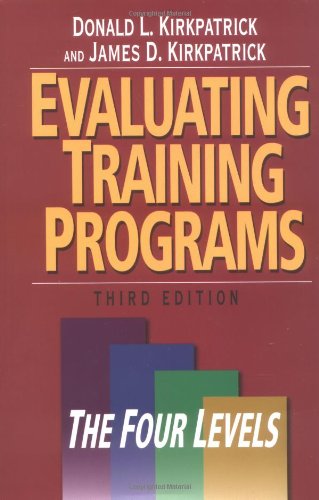Evaluating Training Programs: The Four Levels ebook
Par roper dorothy le mardi, juillet 19 2016, 03:16 - Lien permanent
Evaluating Training Programs: The Four Levels. Donald L Kirkpatrick

Evaluating.Training.Programs.The.Four.Levels.pdf
ISBN: 1576753484, | 399 pages | 10 Mb

Evaluating Training Programs: The Four Levels Donald L Kirkpatrick
Publisher: Berrett-Koehler Publishers
The case study example below will follow the Phillips ROI Methodology™ and encompass the four major phases of the methodology: Evaluation Planning. The Kirkpatrick Model for evaluating training programs is the most widely used approach in the corporate, government, and academic worlds. Pedagogical models used to design but an emergent process. In this light, I reject the conventional Kirkpatrick four-level model (1994) for evaluating outcomes, which has been critiqued for collecting outcomes data after an intervention, and downplaying the complex variables that can influence change (Bates, 2004). Mainly focused on the content and processes of courses, such research often misses richer data on how contextual factors may influence implementation outcomes. Kirkpatrick presented to over 130 members of the Portland workplace training community on “Evaluating Training Programs: The Four Levels.” Dr. First film acting program for teens,” Rita Litton's ACTeen—winner of multiple Backstage Readers' Choice Awards—offers full-time, part-time, after-school, and weekend theatrical and on- camera training programs for teens and young adults of all skill levels. Students may enroll in eight-week fall, winter, and spring programs; two- to four-week summer sessions; and a six-week Saturday-only summer program. Case Study: How XYZ law firm used Phillips ROI Methodology to evaluate the efficiency and effectiveness of their project management training programmes. Private coaching and evaluation are also available. Training show improvement in efficiencies, productivity, profits, costs, reduced turnover? Level 5: ROI: Did the training programme show a positive ROI?